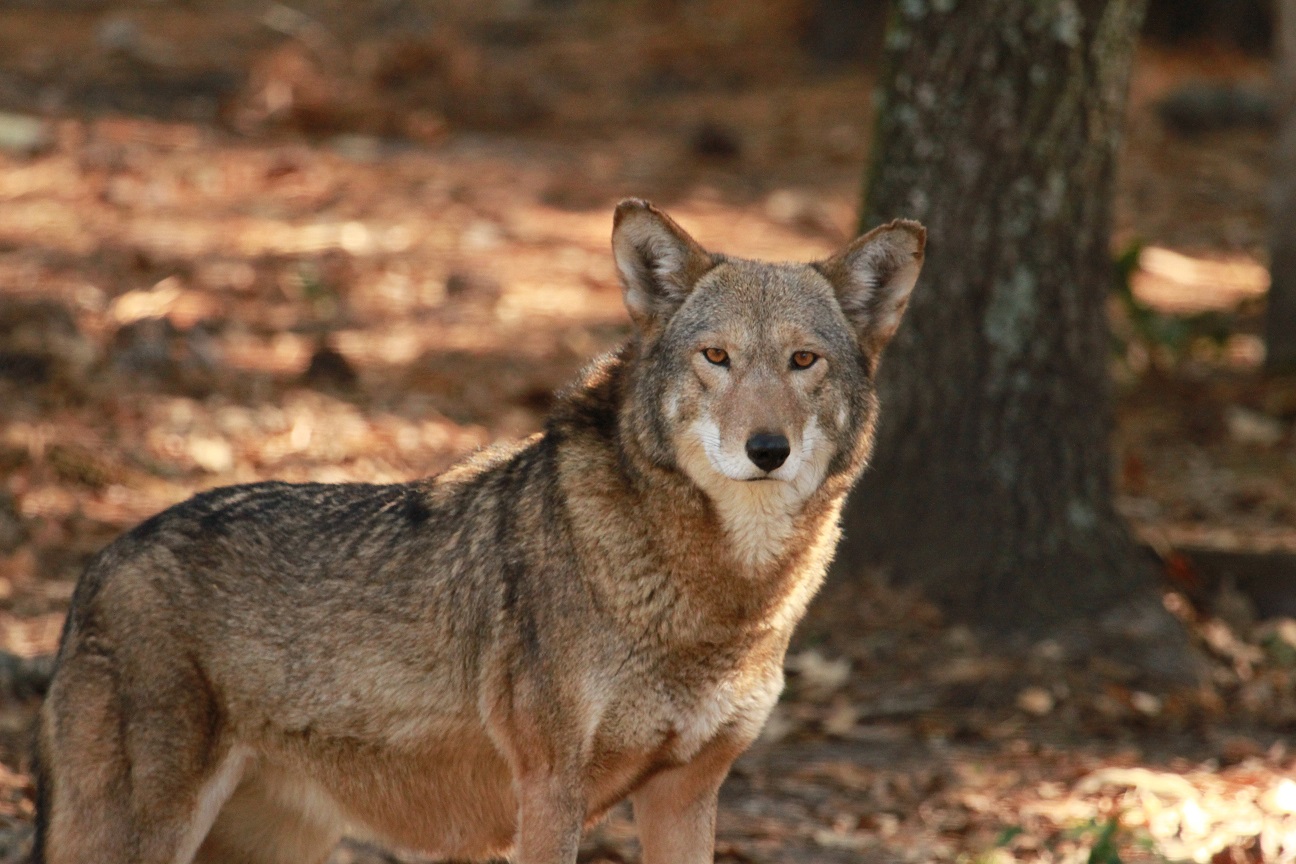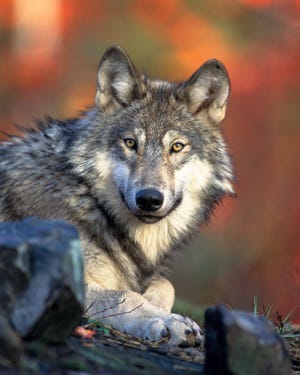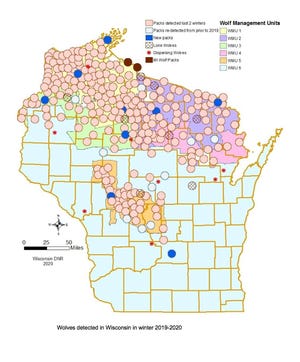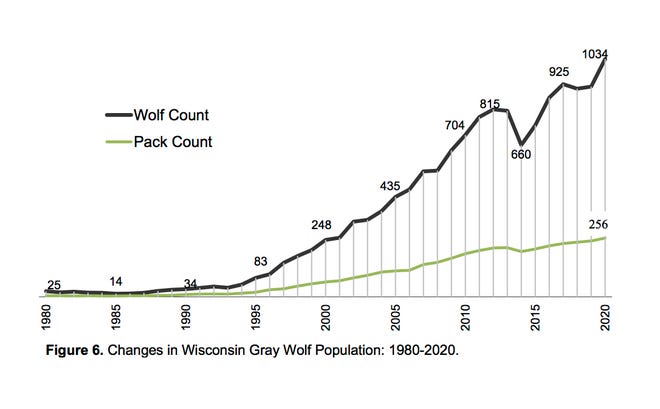 |
| Red wolf |
The red wolf currently numbers around seven collared individuals and a dozen or so uncollared individuals in the wilds of northeastern North Carolina, making it one of the most critically endangered species in the U.S. The vast majority of these wild individuals reside in 1.7 million acres of public and private land in Beaufort, Dare, Hyde, Tyrrell, and Washington counties. Meanwhile, more than 200 animals live in captive facilities across the country. With such a low population, it is no wonder that a federal judge ruled last week that the U.S Fish and Wildlife Service (FWS) must release captive wolves into the management area. The judge, Terrence Boyle of North Carolina's Eastern District, joined with conservation groups concluding that the agency was "likely" in violation of the Endangered Species Act and must take urgent actions to save the wolves. In response to a 2018 federal notice by the FWS that current controls limit the release of captive wolves, Judge Boyle stated that their future depended on it. He also overruled the agency in October 2020 in a lawsuit filed by the Center for Biological Diversity, when he ordered the FWS to revise its red wolf management plan by February 2023. In authorizing plaintiffs' motion for preliminary ruling, he ordered the agency to establish a plan by March 1, 2021 to proceed releasing captive wolves in the Red Wolf Recovery Area. But he stopped short of mandating a specific number.
 |
| Red wolf running |
It looks like to me there is a sign of hope for red wolves regarding their reintroduction back into the wild. These animals once numbered about 130 to as much as 150 wild individuals in 2005. However, by 2012, the recovery program was hampered by the following conflicts: more wolves were being killed by guns, poisoned or vehicles, and interbreeding with coyotes. At the same time, public and political attitudes turned against the wolves, and by 2015, the FWS cut down on management plans. The situation sparked outrage among conservation groups and many filed lawsuits against the agency on grounds of the violation of the Endangered Species Act. The Southern Environmental Law Center, which represents the Red Wolf Coalition, Defenders of Wildlife and the Animal Welfare Institute, argued in a November 2020 lawsuit that the FWS had failed to maintain its responsibility under the act to carry out management drills to conserve the wolves. It also called for the court to order urgent reinstatement of the practice of repopulating wild wolves with captive-bred individuals.
.jpg) |
| Red wolf howling |
I feel that this is a high time to reintroduce red wolves back into their former habitats. These animals once ranged throughout the southeastern U.S from the Ohio River Valley and central Pennsylvania to southeastern Missouri and Central Texas before being confined to North Carolina. In addition to North Carolina, I think it is essential to identify potential release sites for red wolves in the region. For example, the wolf population in Florida's St. Vincent National Wildlife Refuge are raised in captivity and need to be released on the state's mainland where the species was once extinct. Releasing red wolves in places where they had disappeared from can benefit the ecosystems such as keeping deer and other prey populations under control. I would also suggest that awareness programs need to be implemented in order to educate the public about red wolves and how they are beneficial for the well-being of southeastern U.S. Furthermore, coyotes are not native to North Carolina so it is essential to eradicate them and this in my opinion requires careful and precise planning in order to avoid any accidental killings of red wolves. Red wolves are on the precipice of extinction and it is high time to repopulate them and bring them back from the brink.





